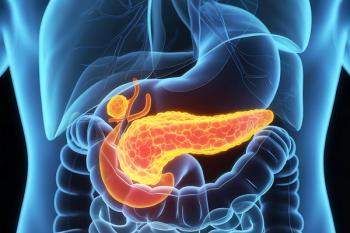
The Challenges of Characterizing PFAS in the Environment
In part 2, Ralph Mead and his team explain the challenges of characterizing and quantifying PFAS in environmental samples.
Per- and polyfluoroalkyl substances (PFAS) are a large group of synthetic chemicals that have been widely used in industrial and consumer products since the 1950s because of their water, grease, and stain-resistant properties (1). PFAS do not break down easily, leading to widespread contamination in water, soil, and air (1).
People are exposed to PFAS chemicals regularly as a result. Because PFAS break down slowly, these chemicals can accumulate in the human body and lead to health concerns, including cancer, liver damage, immune system disruption, and fetal and young children developmental issues (1).
Chromatography is helping to play a role to quantify and characterize PFAS in the environment. Techniques such as liquid chromatography (LC), mass spectrometry (MS), and total organic fluorine (TOF) analysis have played a crucial role in detecting and quantifying PFAS in environmental and biological samples. Traditional target analysis identifies only a fraction of PFAS present, while non-targeted screening methods help reveal unknown compounds (1).
Regulatory efforts are increasing worldwide to limit PFAS contamination, with bans and stricter guidelines emerging for drinking water and industrial discharges. Researchers continue to develop advanced remediation strategies, such as activated carbon filtration and novel destruction methods, to mitigate the environmental and health impacts of these persistent pollutants.
However, challenges persist, and the North Carolina PFAS Testing Network is working to overcome these issues. The North Carolina PFAS Testing Network is a consortium of North Carolina researchers and scientists who are working together to investigate PFAS. One of these investigators is Ralph Mead, who leads a group at the University of North Carolina (UNC), Wilmington.
“One of the major challenges is that they are in very low abundance, and so we need detection capabilities that are very sensitive,” Paul Wojtal, a postdoctoral scholar at UNC Wilmington, said to LCGC International. “And so, we were using a lot of new technologies to try and maximize our chances and our capabilities of measuring PFAS in different environmental matrices. The other big concern is contamination. Everything, it seems like, has at least a little bit of PFAS in it, and so that means that we have to be incredibly careful and incredibly diligent about all the sample handling and simple processing.”
In part 1 of our conversation with Ralph Mead and his group, we discussed the work that they do at UNC Wilmington and with the North Carolina PFAS Testing network (2).
In part 2, they explain the challenges of characterizing and quantifying PFAS in environmental samples. Here’s part two of our conversation with the Mead Group at UNC Wilmington.
References
- National Institute of Environmental Health Sciences. NIH.gov. Available at:
https://www.niehs.nih.gov/health/topics/agents/pfc (accessed 2025-02-19). - Wetzel, W. Inside the Laboratory: The Mead Group at UNC Wilmington and the North Carolina PFAS Testing Network. LCGC International. Available at:
https://www.chromatographyonline.com/view/inside-the-laboratory-the-mead-group-at-unc-wilmington-and-the-north-carolina-pfas-testing-network (accessed 2025-04-03).
Newsletter
Join the global community of analytical scientists who trust LCGC for insights on the latest techniques, trends, and expert solutions in chromatography.





